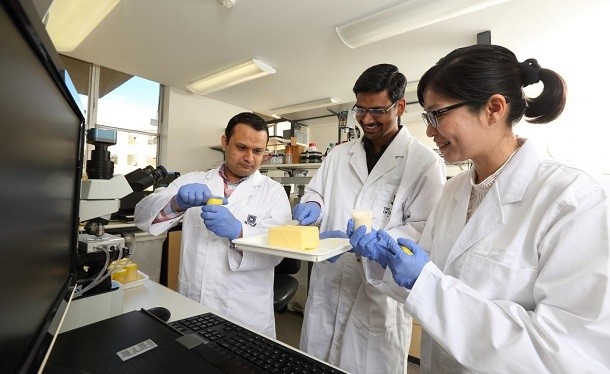Smaller milkfat globules improve ‘spreadability’ of cold butter, Australian researchers find

The research team, led by Professor Bhesh Bhandari of The University of Queensland's School of Agriculture and Food Sciences, in Australia, is working to develop new techniques to create innovative dairy products with relatively small capital funding.
"Fat globules in milk come in various sizes, with each size class able to be used to improve specific dairy products," Bhandari said.
"Our latest findings reveal that small fat globules impart an amazing stability to cream and give cold butter softer texture and improved spreadability."
Bhandari and his team are exploring the use of nanoemulsion technology (emulsified oil and water systems with droplets ranging in the billionths of a meter) in dairy food applications, which is also gaining popularity in the pharmaceutical industry.
From micron to nanometric globule sizes
A two-stage centrifugal separation method, at various separation temperatures and feed rates, was employed to separate out milk fat globules from milk and cream. This double separation method was able to create streams with an average fat globule size as small as 1.35 μm (.00135mm) and as large as 4.28 μm (.00428mm) without affecting the droplet integrity.
To achieve the even lower fat globule size, which led to improved spreadability and churnability of various dairy products, researchers added various amounts of emusifiers (sodium caseinate or Tween80) to the sample of cream.
“The addition of Tween 80 reduced the churning time significantly and also decreased the fat content of buttermilk as compared to NaCN added cream,” researchers wrote.
Dairy manufacturers to benefit
The research outcome could usher in a wave of new dairy product innovation for dairy manufacturers.
"We expect this innovative approach can be used to increase the whippability of low fat cream and to manufacture functional cream powder for use in recombined liquid milk, cheese, yoghurt and butter making," Bhandari said.
"This is a great outcome for the dairy industry, as these innovations could boost the sale of dairy fat products, potentially increasing the return on investment to dairy manufacturers," ARC Dairy Innovation Hub director associate professor, Sally Gras, said.
Bhandari added that the use of small fat globules in dairy products can be readily applied to existing dairy equipment, providing cost savings to dairy manufacturers.
Source: Food Research International
Published online ahead of print: doi.org/10.1016/j.ifset.2017.03.011
“Effect of fat globule size on the churnability of dairy cream”
Authors: Bhesh Bhandari et al.




